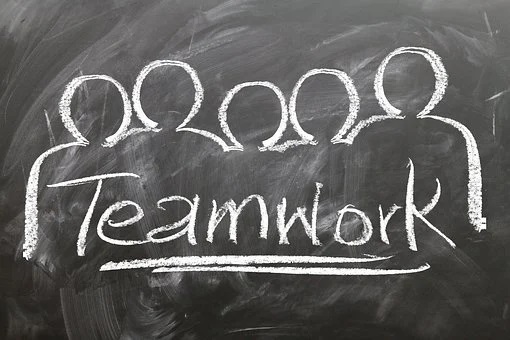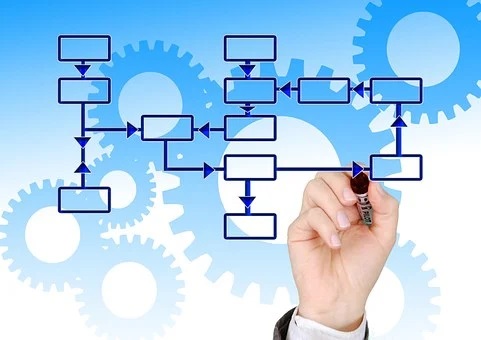This is part 2 in a series of posts on team incentives and describes 5 ways to develop winning team incentive programs. I don’t see them commonly used in healthcare organizations and this is a shame. When used correctly, a team incentive program is a compensation strategy that can help the organization achieve results that it could not otherwise obtain.
To bring you up to speed, team incentives are payments that are made to a “team” for obtaining defined results. The team could be an cross-functional team working on a specific project, or it could be a department or unit seeking process improvement or better outcomes. These outcomes could be financial, quality, or patient/employee satisfaction. In the first post, we discussed the pros and cons of using team incentives as part of a compensation strategy.
The third post on this subject will discuss what goals and objectives best lend themselves to the use of team incentives and what the core building blocks of an effective team incentive program are.
In this post, I want to discuss the factors that lead to a successful team incentive program. I know some of you may have tried team incentive plans in the past without noticeable success. Other HR professionals may avoid them because they either don’t understand them or they have tried them in the past without success.
With many years of using team incentives, I have discovered some of the key elements of determining the success or failure of such plans. It is probably easiest to start with the top reasons of why team incentives fail. Success will be defined by doing the opposite!
Why they fail
- The incentive program is too complicated or unachievable. There is often the fear that the team may get rewarded by “cutting corners” or reducing the quality of care, or some other reason. To prevent this, the incentive plan tries to include every potentiality and gets very complex in defining how the goal is to be met and all the other factors that must be addressed. Employees get discouraged because the plan is either not understandable or seems unachievable. I have heard employees say they feel manipulated because it appears management is trying to get results without ever letting the team actually reach the goal. My experience has mainly been with using incentives for significant process or productivity improvements. In this case, define a clear productivity goal, define a quality or satisfaction control and leave it at that. We will show you how to do this later.
- The payoff is too distant. Team incentive programs that offer an end-of-the-year reward don’t do much for motivation. You may see reports of the CEOs of major corporations receiving huge year-end bonuses. That works for those individuals because the size of the reward often dwarfs their salary, and they have a good deal of control over directing the workforce to achieve their goals. This is not true of team incentives. Their reward depends upon the performance of all team members and they do not have direct control of these members.
- The payoff is insignificant. If it appears the organization is trying to get something for nothing the team will be very cynical. Expecting significant improvements in productivity or process outcomes for a one-time check of $100 will not get significant results. My rule of thumb has been this: pay a one-time bonus for achievements related to a one-time project. If you have a cross functional team working on implementing a new IT system, then a one-time payout would be appropriate. However, if you are asking a work team to achieve new productivity standards on an ongoing basis, then a one-time payout may not do it.
- Lack of interest by the manager or team leader. A team incentive program will not make up for a poor manager or team leader. In my experience, any failures we had resulted from poor leadership within the department or work team. The exact same incentive program would achieve phenomenal results in a work team with good leadership and go nowhere with a team that had ineffective leadership.
- No incentive to maintain the gains. Changing work processes or improving productivity requires hard work and will result in doing things differently– not just one time, but on an ongoing basis. The tendency to give the team a one-time payment for a permanent change in the work processes is viewed as manipulative and unfair. Permanent changes should result in long lasting rewards.
Successful team incentive programs:
- Are achievable and easy to understand. If we gave a nursing unit a new productivity department we defined the target. We then included two qualifiers to address patient satisfaction and quality. The target might be 6.9 HPPD (hours per patient day), and a patient satisfaction score of X must be maintained. It was understood that quality would be maintained. While quality may be elusive and complicated, such indicators as medication errors, patient falls, employee injuries were already be captured. Since we were addressing staffing , the team could claim gains if these were adversely affected. It was pretty simple- a new productivity goal but there could be no measurable change in quality or satisfaction.
- Pay off when the results are achieved. The payoff should occur immediately when the results are obtained. In our example of using team incentives for productivity gains, the payoff occurred immediately following the pay period in which the target was achieved.
- Make sure the payoff is commensurate with the achievement. A winning team incentive program will view the employees as partners. Since we were rewarding for productivity gains, we viewed the work team as partners. It was fairly simple to calculate the impact of the productivity gains. 50% of the gain went to the organization and 50% went to the work team. In our plan, we paid no incentive for meeting targets that were benchmark or being achieved by other organizations. It was an expectation of the job that the work team’s performance should equal that of our peers and competitors. However, for any gains that went beyond those considered “normal” we were willing to share with the team.
- Have effective team leadership. A team incentive plan is only a tool. A good leader can effectively use it to get great results. A poor leader will not use it any more effectively than they use any other tool or strategy. In my personal experience, incentives were almost always successful when the leader outlined the goals to the team and gave them a good deal of freedom for input and decision making on which strategies to pursue. When it wasn’t successful, it was because the managers did not hold team meetings or allow much freedom of input by team members. Poor managers either determined the incentive program would not work, or created a plan by themselves for the whole team execute without their input.
- Allow the team to maintain the gains. In our example, after meeting the productivity targets consistently for 3 months, the incentive amount became part of the regular wage. It was an “at-risk” addition to the base salary and would not be paid for any pay period in which the new target was not met. Team members could keep the gains that they made and the organization reaped the benefit from the team’s achievement.
In my case of using team incentives to achieve increased productivity goals, they were so effective that in several departments we increase their goals 3 times within 12 months. We told the staff that we were okay with them being the highest paid in the city -even the country– if they were willing to achieve the best productivity results.
Team incentives and productivity
Ax you may notice, I harp on productivity in my posts. Healthcare is a people-intensive industry. A well run healthcare delivery organization will need over 3 employees for every customer. Can you imagine if Walmart needed that same ratio?
That is why the biggest gain can come to the organization through improving productivity. Yes, team incentives can and should be used for other goals or “one-off” projects. They are a great tool for impacting productivity in any healthcare delivery system.
HR can achieve increased influence and credibility by mastering how to improve it. Team incentive programs are a great tool in going beyond what the C Suite thinks is achievable. They can allow you to achieve gains without a negative impact on employee satisfaction.
Challenging employees is a great endeavor. They can often accomplish more than you could dream. We just need to unleash them.






One thought on “Winning Team Incentives: 5 Ways to to Succeed”